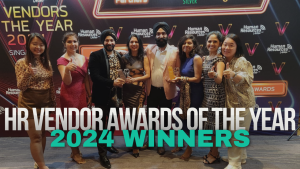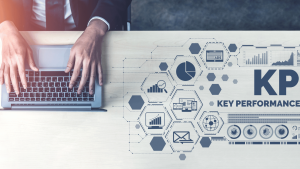Integration of time-tracking cloud solutions with HRMS is a critical aspect of modern workforce management. In this section, we will explore the importance of this integration, defining both time-tracking cloud solutions and HRMS. By understanding the significance of this integration, businesses can optimize their time management processes, streamline HR operations, and enhance overall productivity.
Significance of Integration
Integration is key to optimizing and streamlining time-tracking cloud solutions and HRMS. Merging these two systems provides businesses with a range of advantages that can improve operations and employee satisfaction.
Firstly, integration boosts efficiency and productivity. Combining time tracking and HRMS eliminates manual data entry and processes, saving time and effort. This efficient approach allows employees to focus on more meaningful tasks, raising productivity in the organization.
Secondly, this integration increases data accuracy and security. Automated data transfer between time tracking and HRMS platforms reduces the risk of human error. Plus, encryption safeguards sensitive employee information, giving employers and employees peace of mind.
Thirdly, integration promotes employee satisfaction and engagement. Real-time access to accurate data gives employees more control over their time management, leave requests, and other HR activities. Empowering employees encourages a sense of ownership and engagement with their work, leading to higher job satisfaction levels.
Integration brings even more benefits than those listed above. The connection between time tracking cloud solutions and HRMS helps businesses reach their maximum potential in terms of efficiency, accuracy, and employee engagement.
Comprehending Time Tracking Cloud Solutions and HRMS
Time Tracking Cloud Solutions and HRMS are two must-haves for modern businesses! Time Tracking Cloud Solutions help organizations to accurately track employees’ working hours & attendance. These solutions are hosted on the cloud, which allows for easy access & syncing across devices & locations.
HRMS is a comprehensive system that takes care of various HR functions. It’s a central database for all employee-related information & streamlines HR processes.
Integrating Time Tracking Cloud Solutions and HRMS brings many benefits. Firstly, efficiency and productivity increase because manual data entry & admin tasks are minimized. Managers can access real-time data quickly.
Data accuracy & security are also enhanced. By automating time tracking with cloud-based solutions, human errors are reduced. Sensitive info is secure in the encrypted cloud environment, so risks are minimized.
Employee satisfaction & engagement also get a boost. Employees can easily track their own time off requests & view leave balances. Transparency between employees & management is improved & self-service capabilities promoted.
When choosing an integration solution, consider business requirements & scalability. Customization options should be assessed based on business processes. Cost analysis is important too. Calculate ROI to decide if the benefits outweigh costs. Look at vendor support & training to minimize disruptions during integration.
Integrating these systems helps to maximize productivity & efficiency. Admin tasks like time tracking, leave management & payroll are streamlined. Data analysis and reporting let decision-makers gain valuable insights into workforce trends.
Integrating Time Tracking Cloud Solutions with HRMS = Track productivity without losing your mind.
Benefits of Integration
Integrating time-tracking cloud solutions with HRMS brings a range of benefits. From improved efficiency and productivity to enhanced data accuracy and security, this integration empowers organizations to streamline their processes. Furthermore, it boosts employee satisfaction and engagement, leading to a more harmonious work environment. These advantages make the integration of time-tracking cloud solutions with HRMS a strategic move in today’s fast-paced digital landscape.
Improved Efficiency and Productivity
Integrating time-tracking cloud solutions with HRMS boosts efficiency. It streamlines admin tasks like manual timesheets and payroll processing. Real-time data analysis gives crucial insights for better decision-making.
Select a solution that offers seamless integration capabilities to maximize efficiency. Prioritize enhanced data accuracy and security to protect sensitive info.
Enhanced Data Accuracy and Security
Integrating Time Tracking Cloud Solutions with HRMS yields improved data accuracy and security. Manual data entry is eliminated, reducing the chance of human errors. Plus, sensitive employee information is safeguarded with role-based permissions and encryption protocols.
Reliability and confidentiality are also ensured by the integration. Real-time synchronization between time-tracking cloud solutions and HRMS gives companies a secure, centralized system to minimize data breaches or unauthorized access.
In conclusion, as stated in the article “Integration of Time Tracking Cloud Solutions with HRMS,” integrating these systems boosts data accuracy by disallowing manual data entry errors.
Increased Employee Satisfaction and Engagement
Companies that integrate time-tracking cloud solutions with their HRMS have increased employee satisfaction and engagement. Combining these systems makes it easy for employees to track time, manage tasks, and use one login. This saves them time and effort.
The integrated time tracking system within their HRMS lets employees submit timesheets, request time off, and view schedules. This automation streamlines admin tasks and reduces errors. Workflows become more efficient, allowing employees to focus on more strategic work.
Integrated systems also boost employee engagement. Real-time data analysis and reporting capabilities give employees insights into their productivity and performance metrics. This encourages ownership of work and continuous improvement. Managers can use the data to provide timely feedback and recognition, further increasing employee satisfaction.
Choosing the Right Solution
When it comes to choosing the right time-tracking cloud solution for your HRMS, there are a few key factors to consider. In this section, we’ll explore how:
- Evaluating your business requirements
- Considering scalability and customization options
- Assessing the cost and return on investment
Can help you make an informed decision. With these insights, you can select a solution that seamlessly integrates with your HRMS and optimizes your time-tracking processes.
Evaluating Business Requirements
Assessing a business’s individual needs and objectives when it comes to integrating time-tracking cloud solutions with HRMS is key. To do this, analyzing the factors that drive the biz’s requirements and guaranteeing the chosen solution agrees with its goals and processes is a must.
- Pinpointing Functional Needs: The evaluation starts with finding the particular functionalities and capacities necessary for effectively managing time tracking and human resource management. Automated time tracking, payroll management, leave management, and employee scheduling are some of these features.
- Getting Integration Requirements: Examining the business requirements includes understanding how well the time-tracking cloud solution connects with existing HRMS or other business systems. Interoperability, trouble-free data transfer, and efficient workflows are key in this process.
- Checking Regulatory Compliance: Businesses are often bound by law to respect specific labour laws, privacy regulations, or industry standards. Assessing the selected solution’s capability to meet these compliance needs will help avoid any risks resulting from non-compliance.
- Examining Scalability: An essential factor is evaluating whether the time-tracking cloud solution can scale with business growth. An adjustable solution that can adjust to changing workforce sizes, organizational structures, and ever-changing needs over time is important.
To ensure a smooth integration process and successful implementation of a time tracking cloud solution along with HRMS, businesses must assess their unique requirements. Taking into account functional needs, integration abilities, regulatory compliance, and scalability will help firms make informed decisions about picking the most suitable solution for their operations.
Go like a chameleon on roller skates and scale up your integration, making sure it fits your business demands and can keep pace with your expansion.
Considering Scalability and Customization
Scalability and customization are essential when integrating time-tracking cloud solutions with HRMS. Assess the system’s ability to handle more users and data as the organization grows. Also, evaluate the customization options to ensure the solution can be tailored to the organization’s unique needs and workflows.
Let’s explore why these are important:
Scalability: Every org has its own requirements and processes for time tracking and HR management. The integration solution should offer customization options to align the system with its specific workflows, policies, and reporting needs. This flexibility enhances user experience and improves overall productivity.
Customization: Every org has its own requirements and processes for time tracking and HR management. The integration solution should offer customization options to align the system with its specific workflows, policies, and reporting needs. This flexibility enhances user experience and improves overall productivity.
Considering these aspects helps organizations find an integration solution that fits their current needs and is adaptable for future growth. By selecting a scalable and customizable system, companies can ensure a seamless integration process and optimize productivity in managing time tracking within their HRMS environment.
Assessing Cost and Return on Investment
Assessing cost and return on investment is key when thinking of integrating time-tracking cloud solutions with HRMS. Evaluating financial implications and potential benefits can help make wise decisions for implementing this.
Below is a table overviewing factors to consider when assessing cost and return on investment in integration:
| Factors | Function |
|---|---|
| Initial Investment | Upfront costs for purchasing and putting in the integrated system. |
| Maintenance Costs | Ongoing expenses for system maintenance, updates, and support. |
| Time Savings | Reduction in manual tasks, thus improved productivity. |
| Data Accuracy | Enhanced accuracy of employee data from real-time integration. |
| Employee Engagement | Improved employee satisfaction thru self-service capabilities. |
| ROI Calc. Method. | Establish metrics to measure the return on investment. |
Besides the factors above, it’s essential to think of other unique details when assessing cost and return on investment of integrating time-tracking cloud solutions with HRMS. This includes checking if existing business systems, such as payroll and project management tools, are compatible with the integrated solution.
Don’t miss out on maximizing your organization’s efficiency, accuracy, and employee satisfaction. Take action now to make informed decisions that’ll benefit your company in the long run.
Best Practices for Integration
To ensure a successful integration between time-tracking cloud solutions and HRMS, it is crucial to follow the best practices. Here, we will explore key strategies for seamless integration, including:
- Establishing clear objectives and goals
- Ensuring seamless data transfer and integration
- Providing training and support for employees
By implementing these practices, businesses can optimize their time tracking and HR processes, leading to increased efficiency and accuracy.
Establishing Clear Objectives and Goals
Setting clear objectives and goals is essential for any integration project’s success. Defining what needs to be done and outlining specific targets keeps everyone on the same page – especially when integrating time-tracking cloud solutions with HRMS.
Having clear objectives and goals helps prioritize tasks and allocate resources. Without them, there could be confusion and inefficiencies. They also keep stakeholders informed and engaged, improving collaboration and decision-making.
To establish clear objectives, organizations should conduct assessments and involve relevant stakeholders. Then set measurable targets that align with strategic goals. This roadmap guides decision-making and prioritization and leads to improved efficiency, accuracy, and employee satisfaction.
All in all, establishing clear objectives and goals ensures that data transfer and integration are successful – like peanut butter and jelly!
Ensuring Seamless Data Transfer and Integration
Efficient and error-free data transfer and integration are vital for successful data flow between time-tracking cloud solutions and HRMS. This smooth flow boosts productivity and accuracy, giving the organization an overall advantage.
The table below summarizes the important aspects of ensuring seamless data transfer and integration between time-tracking cloud solutions and HRMS:
| Aspect | Process |
|---|---|
| Data Transfer | Set up secure protocols for transferring data |
| Data Mapping | Map fields and attributes for precise data transfer |
| Data Validation | Validate data to keep integrity and reliability |
Furthermore, remember to integrate various data formats and sources while making sure they’re compatible, synchronized, and consistent. This holistic approach will guarantee streamlined info across the organization, resulting in improved efficiency.
Pro tip: Keep an eye on and test data transfer mechanisms to spot any issues or slowdowns early. This way, you can fix them quickly and maintain uninterrupted integration.
Training and Support for Employees
Integrating Time Tracking Cloud Solutions with HRMS demands employee training and support for successful implementation and adoption. To do this, organizations should provide:
- Comprehensive Training Programs covering the integrated system’s time tracking and HRMS features.
- Individualized Support; so employees understand and can solve any issues they encounter.
- Ongoing Assistance, even after the initial training period.
- Documentation and Resources, like user manuals and FAQs so that employees can find solutions independently.
- A Feedback Mechanism; so employees can express their experience and improvements can be made.
Tailor training and support to specific organizational needs for maximum employee success. Regularly update materials and offer refresher courses for updates and enhancements. Streamline your time and HR management with integration for optimum productivity.
Why integrate Time Tracking Cloud Solutions with HRMS?
Simplify and streamline your workforce management with TimeCentral’s comprehensive Time Cloud Solution. Harness the power of advanced features such as Attendance Tracking with Geofencing & Geolocation, Announcements, Incident Reporting, Scheduling App, Absence Management, and Mobile App. Boost productivity, enhance employee engagement, and ensure efficient time management.
- Attendance Tracking: Track employee attendance accurately using geofencing and geolocation, ensuring transparency and accountability.
- Announcements: Communicate important updates and announcements to your entire workforce instantly, keeping everyone informed and aligned.
- Incident Reporting: Streamline incident reporting and documentation processes, ensuring prompt resolution and compliance.
- Scheduling App: Effortlessly create and manage employee schedules, optimizing resource allocation and reducing scheduling conflicts.
- Absence Management: Simplify and automate absence management, including leave requests, approvals, and tracking, for a seamless workflow.
- Mobile App: Enable employees to access time-related information, submit requests, and stay connected on the go, ensuring flexibility and convenience.
Integrate TimeCentral’s Time Tracking Cloud Solution with your HRMS and revolutionize your workforce management. Experience the power of efficient time tracking, seamless communication, and enhanced productivity. Visit TimeCentral to learn more and schedule a demo.
Maximizing Productivity with Efficient Time and HRMS
Maximizing productivity is crucial for any organization, and one way to achieve this is through efficient time and HRMS integration. In this section, we will explore how the integration of time-tracking cloud solutions with HRMS can streamline administrative tasks, enable real-time data analysis and reporting, and promote integration with other crucial business systems. By harnessing the power of these technological advancements, companies can enhance their efficiency, make informed decisions, and drive overall success.
Streamlining Administrative Tasks
Streamlining admin tasks means optimizing and simplifying the duties of an organization. By using systems and processes, companies can reduce manual labour, reduce errors, and boost productivity. Integrating time-tracking cloud solutions with HRMS makes it even easier! Follow these 5 steps to do this:
| Step | Action |
|---|---|
| 1. | Use automated time tracking: Use a cloud-based time tracking system so employees can easily clock in and out. This eliminates manual time cards and spreadsheets, lowering errors and saving time. |
| 2. | Enable self-service features: Let employees manage their own admin tasks with self-service features on the HRMS platform. They can access pay stubs, submit leave requests, update info, or view attendance records. |
| 3. | Centralize data storage: Put all employee info like personal details, attendance records, leave requests, and performance evaluations in a unified HRMS platform. This allows authorized personnel to access the data securely. |
| 4. | Enable self-service features: Let employees manage their own admin tasks with self-service features on the HRMS platform. They can access pay stubs, submit leave requests, update info, or view attendance records. |
| 5. | Integrate payroll processing: Link the time tracking system with payroll processing to automate wage calculation. This streamlines payroll operations and makes sure payments are accurate. |
By streamlining admin tasks, organizations can reduce paperwork, eliminate redundant processes, and comply with labour regulations. Additionally, integrating time-tracking cloud solutions with HRMS brings many benefits, such as real-time data analysis, improved data accuracy and security, and increased employee satisfaction.
Enabling Real-time Data Analysis and Reporting
Integrating time-tracking cloud solutions and HRMS gives organizations the power to analyse data in real time and report on it. This helps businesses spot trends, monitor KPIs and adjust their strategies.
The integration enables efficient KPI monitoring, so issues can be tackled before they arise, and productivity can be boosted. Real-time data analysis and reporting give companies the opportunity to track their progress towards objectives proactively.
Integrating with Other Business Systems
Integrating with other business systems brings many rewards for orgs. A key gain is improved efficiency. By uniting Time Tracking Cloud Solutions and HRMS with other biz systems, manual data entry is no longer needed, saving time and cutting errors.
Also, integration ensures greater data accuracy. Consistent and precise data transfer between different business systems minimizes the risk of discrepancies or duplications.
Furthermore, better security is another advantage. Integrating with other biz systems lets orgs put in place strong security measures, safeguarding sensitive employee data from unauthorized access or breaches.
Moreover, integration facilitates seamless collaboration. By giving a unified platform, various departments can access and share pertinent info in real-time, fostering cross-functional collaboration.
Integrating with other biz systems further boosts an effective decision-making process. Real-time data analysis and reporting let orgs make well-considered decisions quickly. Customized reports can be created, providing insights into key metrics like employee attendance, performance, and project costs.
Lastly, integration allows businesses to connect their Time Tracking Cloud Solutions and HRMS with other vital tools like payroll management software or financial systems. This further streamlines administrative duties and reduces manual labour.
To wrap it up, integrating with other business systems offers many benefits, comprising improved efficiency, enhanced data accuracy, better security, seamless collaboration, and more efficient decision-making.
Integration of time-tracking cloud solutions with HRMS is a critical aspect of modern workforce management. In this section, we will explore the importance of this integration, defining both time- tracking cloud solutions and HRMS. By understanding the significance of this integration, businesses can optimize their time management processes, streamline HR operations, and enhance overall productivity.
Some Facts About Integration of Time Tracking Cloud Solutions with HRMS:
✅ Cloud-based time tracking systems provide accuracy, flexibility, and the ability to analyze workforce data for improved profitability.
✅ Time tracking software must be able to recognize and report non-compliance issues in real-time to avoid employee litigation and monetary loss.
✅ Cloud-based time-tracking solutions offer centralized visibility into work processes, increase accountability, and enhance resilience and agility.
✅ Integrating time tracking with payroll and other systems can save time, reduce paperwork, and ensure consistent information across all systems.
✅ Integrated payroll systems offer features such as cloud-based software, employee self-service capabilities, user-friendly reporting dashboards, and compliance tools.
Conclusion
The joining of time-tracking cloud systems with HRMS brings lots of advantages to organizations. Automation and simplifying time and attendance management processes can boost efficiency, give employees more control, and guarantee keeping to labor laws.
One major benefit of this integration is the capacity to easily follow labor laws. These joined systems offer organizations the tools they need to monitor employee hours, oversee overtime and break policies, and produce compliance reports. This helps companies dodge legal troubles and penalties related to labor law breaches. Plus, integrating these systems allows for smooth linking with payroll software, further organizing the payroll process and guaranteeing accurate and timely payment to employees.
Moreover, the combination of time-tracking cloud systems with HRMS enhances employee self-service abilities. With these joined systems, workers can comfortably access their time and attendance records, submit time off applications, and check their schedules. This self-service functionality not only encourages employees but also reduces administrative pressure on HR departments.
Apart from improved efficiency and self-service abilities, the integration of these systems gives organizations precise and up-to-date data for informed decision-making. Companies can manage employee productivity well and make smart decisions regarding workforce planning and scheduling with accurate time and attendance data.
To sum up, the integration of time-tracking cloud solutions with HRMS offers numerous benefits to organizations. By connecting these two systems, firms can streamline their time and attendance management processes, boost accuracy, and enhance overall workforce management efficiency. This integration not only saves time and lightens up administrative work but also provides organizations with precise and up-to-date data for informed decision-making.
FAQs
Ques 1. What are the benefits of integrating time-tracking cloud solutions with HRMS software?
Ans 1. Integrating time-tracking cloud solutions with HRMS software offers several benefits. It provides centralized visibility into work processes, increases accountability, and enhances resilience and agility. The automation of approval processes improves speed and efficiency, and it also contributes to employee retention and satisfaction by identifying bottlenecks and promoting talented individuals.
Ques 2. How can integrating time tracking with payroll improve efficiency and save money?
Ans 2. Integrating time tracking with payroll systems can save money and increase efficiency by streamlining data entry, improving data security, and reducing errors. It eliminates the need for manual time tracking, which can lead to inaccuracies and underpayment or overpayment of employees. Integrated payroll systems also offer features such as automatic updates, employee self-service capabilities, user-friendly reporting dashboards, and compliance tools, further enhancing efficiency.
Ques 4. What features should businesses look for when evaluating integrated payroll systems for time tracking?
Ans 4. When evaluating integrated payroll systems, businesses should look for features such as cloud-based software with automatic updates, employee self-service capabilities, user-friendly reporting dashboards, alerts and reminders, and compliance tools. These features contribute to increased efficiency, reduced paperwork, and improved employee engagement.
Ques 5. How does cloud-based time-tracking software contribute to improved profitability?
Ans 5. Cloud-based time-tracking software offers accuracy, flexibility, and the ability to analyze workforce data, which can lead to improved profitability. It allows businesses to optimize their resources by understanding their operations’ data and prioritizing their valuable workforce. It also helps identify non-compliance issues in real-time and prevents time theft, resulting in cost savings.
Ques 6. What are the challenges that can arise during the integration of time-tracking cloud solutions with HRMS?
Ans 6. During the integration of time-tracking cloud solutions with HRMS, challenges such as operational change, communication, and change management may arise. It is important for organizations to have a comprehensive roadmap and project plan in place to navigate these challenges effectively. Celebrating milestones along the way can also help in maintaining momentum and ensuring successful integration.






